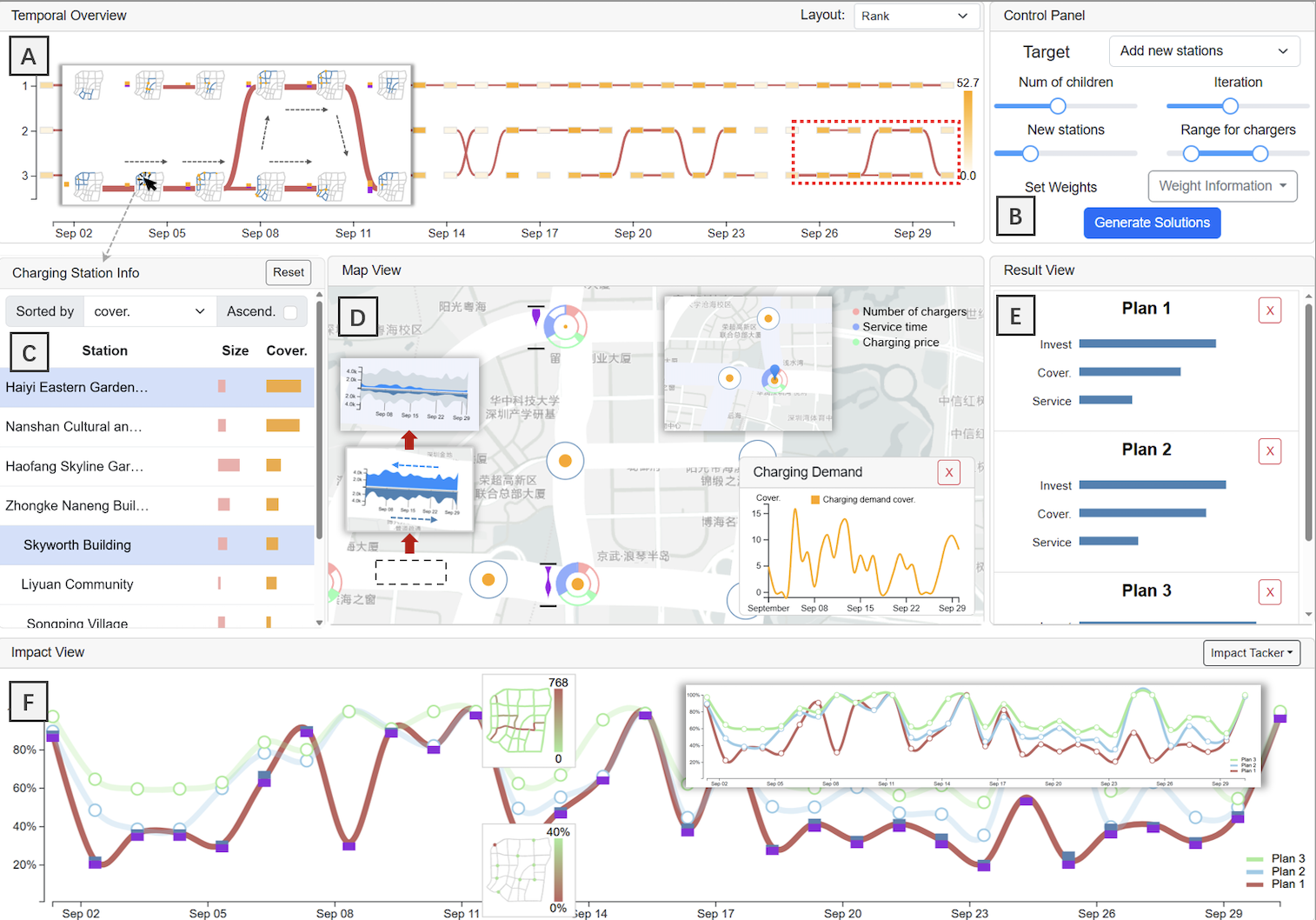CSLens: Towards Better Deploying Charging Stations via Visual Analytics —— A Coupled Networks Perspective
Yutian Zhang - Sun Yat-sen University, Shenzhen, China
Liwen Xu - Sun Yat-sen University, Shenzhen, China
Shaocong Tao - Sun Yat-sen University, Shenzhen, China
Quanxue Guan - Sun Yat-sen University, Shenzhen, China
Quan Li - ShanghaiTech University, Shanghai, China
Haipeng Zeng - Sun Yat-sen University, Shenzhen, China
Room: Bayshore VII
2024-10-16T15:03:00ZGMT-0600Change your timezone on the schedule page
2024-10-16T15:03:00Z

Fast forward
Full Video
Keywords
Charging station location problem, Visual analytics, Decision-making
Abstract
In recent years, the global adoption of electric vehicles (EVs) has surged, prompting a corresponding rise in the installation of charging stations. This proliferation has underscored the importance of expediting the deployment of charging infrastructure. Both academia and industry have thus devoted to addressing the charging station location problem (CSLP) to streamline this process. However, prevailing algorithms addressing CSLP are hampered by restrictive assumptions and computational overhead, leading to a dearth of comprehensive evaluations in the spatiotemporal dimensions. Consequently, their practical viability is restricted. Moreover, the placement of charging stations exerts a significant impact on both the road network and the power grid, which necessitates the evaluation of the potential post-deployment impacts on these interconnected networks holistically. In this study, we propose CSLens, a visual analytics system designed to inform charging station deployment decisions through the lens of coupled transportation and power networks. CSLens offers multiple visualizations and interactive features, empowering users to delve into the existing charging station layout, explore alternative deployment solutions, and assess the ensuring impact. To validate the efficacy of CSLens, we conducted two case studies and engaged in interviews with domain experts. Through these efforts, we substantiated the usability and practical utility of CSLens in enhancing the decision-making process surrounding charging station deployment. Our findings underscore CSLens’s potential to serve as a valuable asset in navigating the complexities of charging infrastructure planning.